Car Won’t Start After Overheating? (9 Causes)
A blown head gasket is the most possible reason a car won’t start after overheating. Overheating can hurt the inside parts of the engine like pistons and bearings. This stops the engine from turning over. Overheated engine can also ruin electrical systems like the battery, starter or alternator. It can melt wires and blow fuses. This stops the car from starting too. Looking at the coolant and radiator hoses regularly helps stop overheating.
The temperature needle on your car’s dashboard is moving up. Or you see steam coming from under the hood. This means your engine is too hot.
When an engine gets too hot, it can cause problems. Your car might stop running. Or it might not start at all.
In this article, we will talk about why your car won’t crank after the engine gets too hot. We will also give practical solutions to get your car going again.
Note: If your car is starting intermittently, make sure to read my guide on that topic as well.
For you guys, I’ve created an interactive tool to help troubleshoot car issues. It guides you through straightforward steps. Don’t forget to utilize it.
- Car refuses to start after overheating due to seized engine, damaged engine components or electrical systems.
- Check error codes, coolant level/color, engine starting condition, battery voltage to diagnose issues.
- Blown head gasket from overheated engine causes oil and coolant to mix, preventing starting.
- Overheating can melt wiring harnesses, blow fuses/relays, foul spark plugs, and damage starter motor.
My Personal Experience With Car Stalls After Overheating
Once my neighbor Carl complained that his old Chevy truck wouldn’t start after the engine severely overheated. We checked under the hood and noticed the radiator fan was not working.
Further analysis revealed the fan wiring melted due to excessive heat. We properly repaired the damaged wires and replaced the faulty fan motor. We also pressure tested the cooling system and replaced Carl’s blown head gasket. After all repairs were complete, the truck started up just fine and no longer overheated.
What Should I Do First If Overheated Car Refuses to Start?
Here are some of the things you should do when overheating issue causes car starting problems:
1. Check OBD2 Codes
The computer that controls your car systems is called the ECU. It stores error codes when there is a problem. You can check these codes yourself to find out why your car won’t crank. This saves time and money on repairs.
Use an OBD2 scanner tool like BlueDriver. Plug it into the OBD2 port under the dashboard on the driver’s side. Turn on the ignition but don’t start the engine.
The scanner will read any stored trouble codes. These codes help figure out the reason your vehicle won’t crank. Sometimes more than one ignition cycle is needed for codes to show up. I mentioned this in my guide on check engine light with no codes.
2. Check Coolant or Engine Oil Color
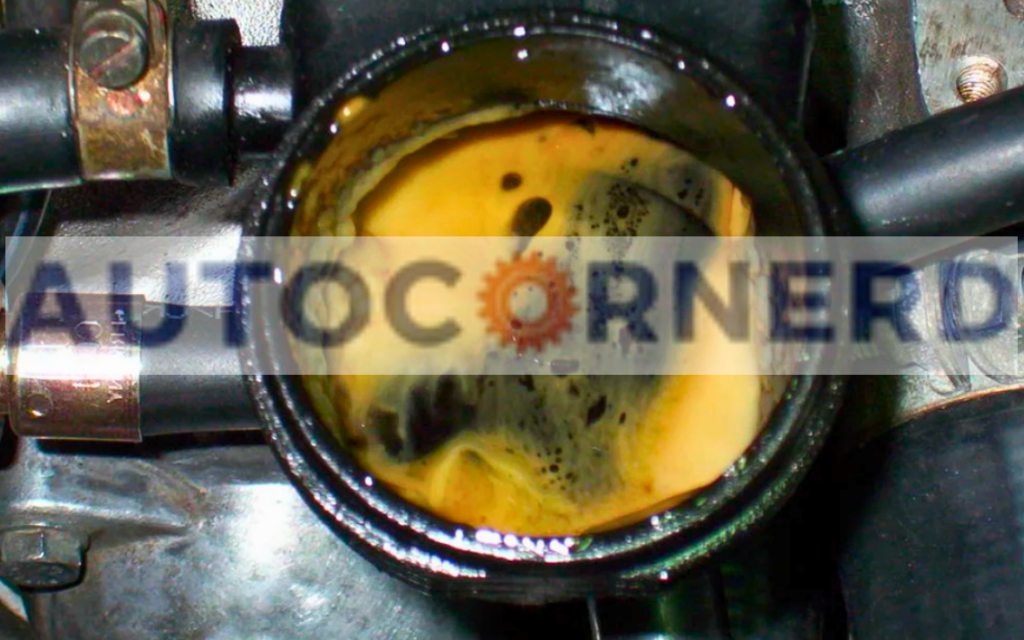
One common reason why an engine gets too hot is a problem with the cooling system. When this happens, it’s important to let the engine cool down all the way before looking at it.
Once the engine is cool, you can look at the coolant color by opening the radiator cap. The coolant color should be bright and clear, depending on the type of coolant your car uses.
If the coolant color looks milky brownish, it shows a serious problem. The milky color means coolant and oil mixed together. This could be because of a blown head gasket.
The head gasket sits between the engine block and cylinder head. Its job is to keep oil and coolant from mixing. But if the head gasket is damaged, it can let the two fluids mix. This mixing can cause a milky brownish coolant color.
Also, if your engine makes white smoke from the exhaust, it shows coolant is burning in the engine. This is because of leaking through the head gasket.
Similarly, if you open the oil filler cap and see milky oil, it means coolant mixed with the oil.
3. Condition Of Engine Starting
When your overheated vehicle doesn’t start, it’s noteworthy to examine the type of problem you’re facing regarding the engine starting. There are two primary conditions of engine starting that you may encounter.
3.1. Starter motor turning the crankshaft, but the engine isn’t starting:
The first condition is when the starter motor is turning the crankshaft but the engine is not starting. This is usually accompanied by a cranking sound when you turn the ignition key.
However, despite the starter motor’s turning capacity, the engine does not start. This condition could arise from several issues such as a blown head gasket, failing fuel system, ignition system, or faulty mechanical components of the engine. You should first do a compression test in that case.
3.2. Starter motor not turning the crankshaft:
The second condition of engine starting is when the starter motor is not turning the crankshaft at all. This would mean that there is no cranking sound accompanying the turn of the ignition key. Typically, this condition can be the result of either a dead battery or a faulty starter motor.
A damaged battery may prevent the starter motor from receiving enough power required to turn the engine over. On the other hand, if the battery is in good working condition, but the starter motor fails to turn, then the starter motor is probably the issue.
What are the Causes Of No-start Issue After Engine Overheating
Here are some of the most common causes of car won’t start when overheated:
1. Battery Is Damaged
Dead battery due to overheated engine can also cause your car fail to start.
When the engine gets too hot, the battery also gets hot. The fluid inside the battery turns into gas from the heat. This affects the battery’s ability to store and give energy.
The fluid turning into gas damages the battery directly. It also creates unwanted material inside the battery. This causes damage inside and changes the battery’s structure.
Over time, this damage can make the battery fail completely. It won’t be able to keep or make electricity.
At first, you may have a weak or drained battery. This makes it hard to start the car. Even if it starts, the battery may not have enough power for the car’s electrical parts. This leads to issues like dim headlights or a weaker air conditioner.
How to check a damaged car battery?
Firstly, it is important to analyze the wires that are connected to the battery terminals. If they appear melted or burned, it is likely that they have been damaged by the heat generated during the engine’s overheating.
This would mean that the battery is not receiving the required charge which will make it difficult or impossible to start the vehicle.
The voltage of the battery also needs to be checked across its terminals. To do so, a voltmeter is required.
Attach the voltmeter’s probes to the battery posts and have someone turn on the ignition key and try to crank the car. If the recorded battery voltage when cranking is below 9.6V, it indicates that the battery is weak and requires replacement.
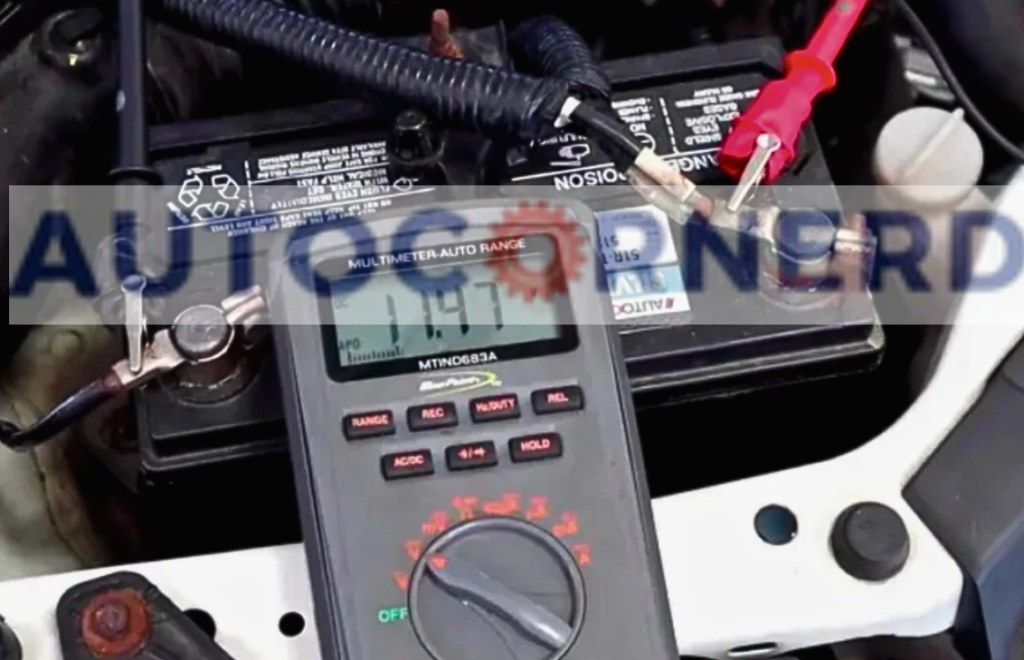
However, if the voltage of the battery is greater than 9.6V, try using a jump starter. Most cars can be jump-started even if the battery has died.
Connect the red terminals of the jumper cables to the red terminals of the battery and the black to the black terminal of the battery.
If the vehicle remains non-functional even after the jump start and the battery voltage shows close to 12V, then there must be an issue unrelated to the battery that needs further inspection.
2. Starter Motor Is Damaged
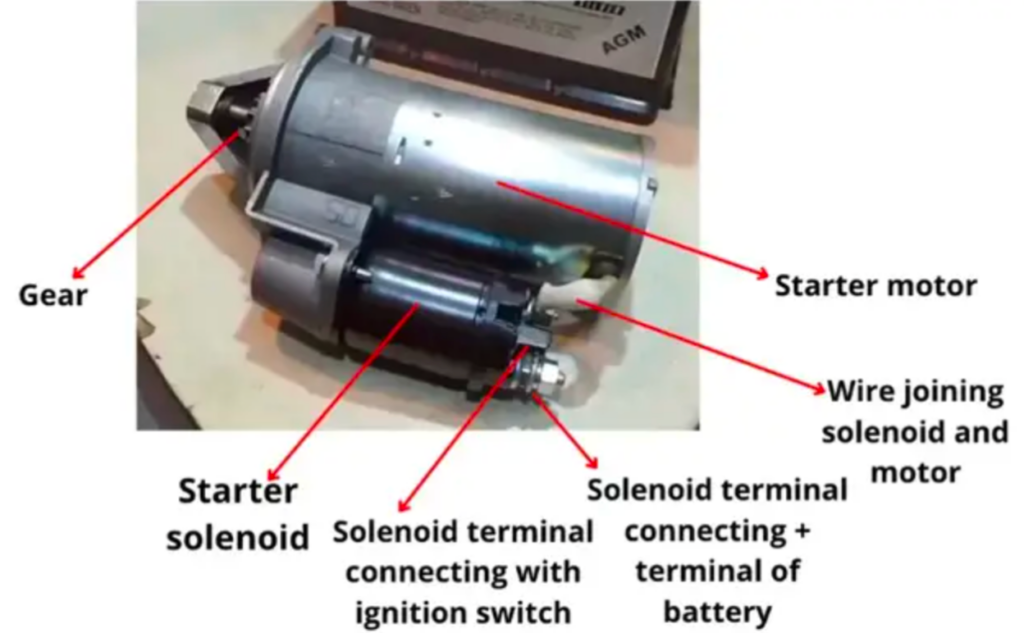
The starter motor turns over the engine by forcefully spinning the crankshaft. It gets the power from the battery through the starter solenoid. When you turn the key, it closes the circuit so the motor turns and the engine turns over.
The starter solenoid has two terminals. One connects to the ignition switch. The other connects to the battery. A wire also links the starter motor to the solenoid. This is an important part of how the starter motor works.
Engine overheating can damage the wiring connections. It can cause melting or burning. This can make the starter motor not start the engine well.
How to check?
To prevent this, check the wiring of the motor and solenoid. Look for any signs of burning or melting. This shows where and how much damage there is.
If connections are fine, you need to bench-test the starter motor. For this, I found the following YouTube video quite helpful.
Also Read: Where to hit starter to make it work
You should also check the voltage between the positive terminal of the battery and the terminal on the starter solenoid which is connected to the battery. If the voltage is greater than 0.2V, it means the wire is burnt.
3. Engine Wiring Harness Is Melted/Burned
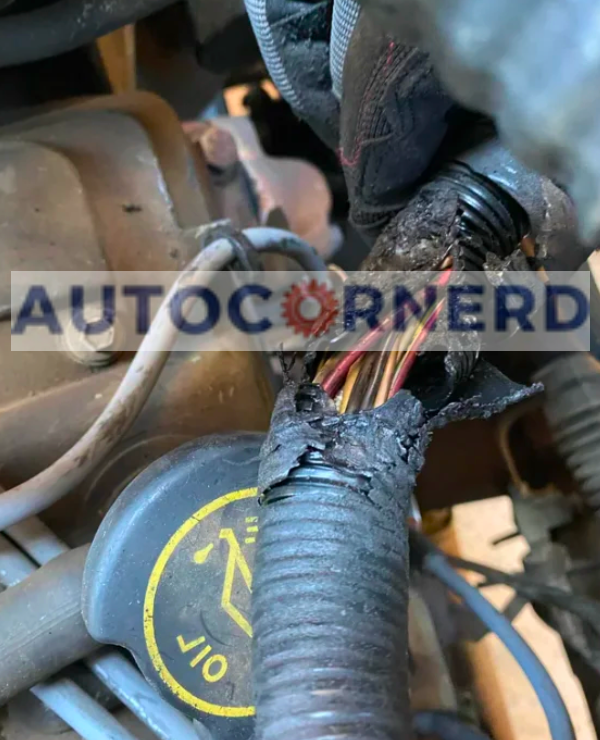
The engine wiring gets damaged when a car engine gets too hot. If you keep driving when the temperature gauge on the dashboard points to high, the wiring can burn.
The insulation around the wires can crack. This leaves the wires bare and exposed.
Exposed wires can get damaged easily or short circuit.
How to check the wiring?
To check the ground wires in an overheated engine, first see the car manual. It shows where the ground connections are.
The negative side of the battery connects to these ground connections. They include the chassis, engine block and other mechanical components.
Use a voltmeter to measure between the negative terminal and a ground. If it’s good, the voltage is under 0.2V.
Over 0.2V means a ground connection problem.
If so, check all ground connections. Make sure the wire insulation is not broken.
You can watch the following YouTube video to understand the concept of ground connections:
Moreover, the contact points of the ground cables should be clean and smooth. Applying a thin film of petroleum jelly to the ground contact points can prevent corrosion and ensure a good connection.
4. Fuses and Relays Are Blown
The car engine can overheat sometimes. If this happens, the electrical system can get damaged. This can make the fuses and relays in the car blow up. Then your vehicle will not crank after this.
To check this problem, you need to find the fuse box in your car. Some cars have fuse boxes in different places. So you should read the owner’s manual. This will tell you which fuse box controls which circuit.
How to inspect the fuses?
When you find the fuse box, put the ignition key to position two. This is called Key On, Engine Off.
Then use a test light or multimeter to check each fuse. First, clip the test light to any bare metal or negative battery terminal. Then touch each end of a fuse with the probe of the test light.
If the test light or multimeter does not light up, it means the fuse is blown. It needs a new fuse.
To test relays, you can watch the following video:
5. Blown Head Gasket
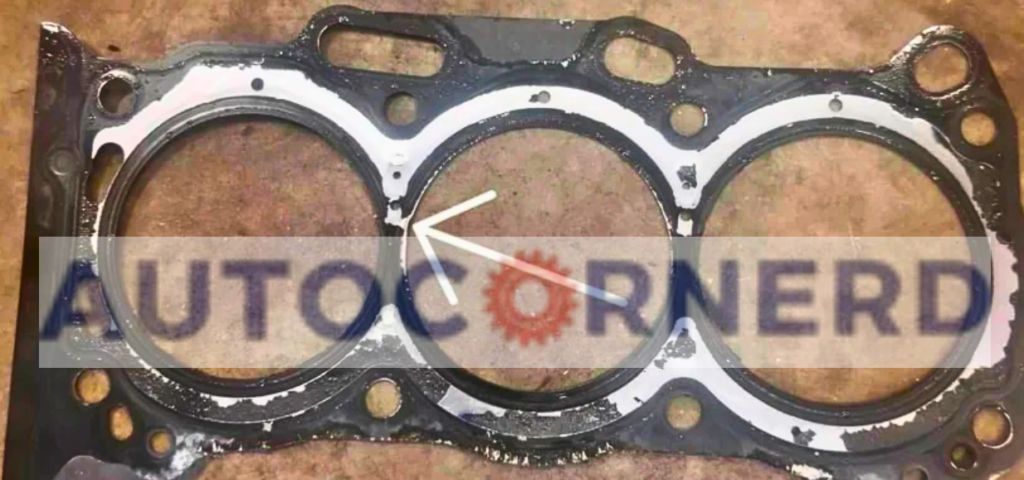
The head gasket sits between the engine block and cylinder head. It seals the combustion chamber and stops oil and coolant from mixing.
When the head gasket is blown, oil and coolant mix. This happens because of how oil and coolant flow in the engine.
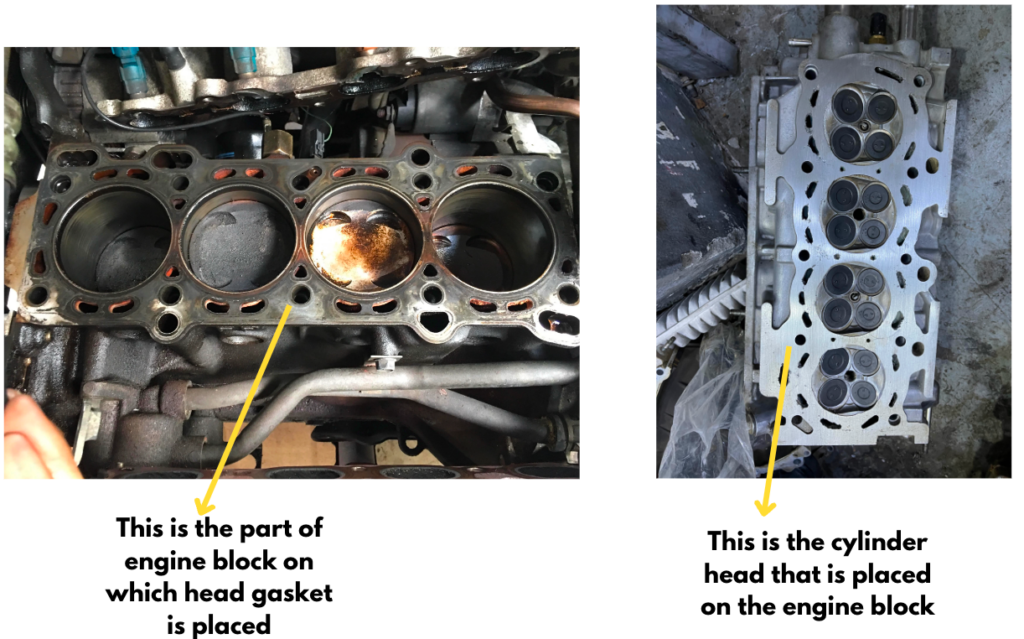
The crankshaft spins in the crankcase. It gets oil and sprays it below the piston. This lubricates the piston. Oil also goes through oil galleries to lubricate the camshaft and valves.
Coolant flows through ducts in the cylinder head and block. The water pump pushes it through the engine block. It flows around the engine and out the cylinder head.
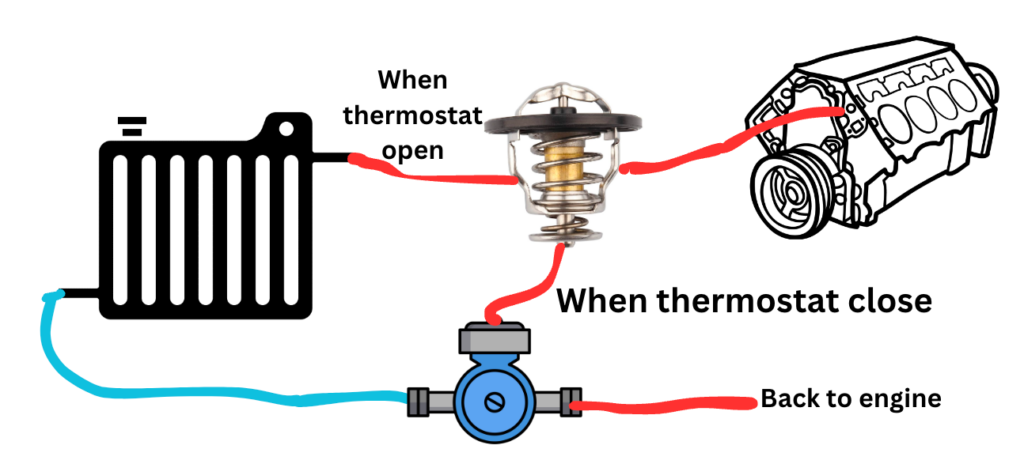
The coolant in the engine of your car flows through holes in the cylinder block. A gasket between the block and cylinder head controls the coolant.
When the engine gets too hot, it puts more pressure on the head gasket. This can make the gasket crack or break completely. A cracked gasket can lead to a mix of oil and coolant. This mix is bad for the engine.
If the head gasket fails, coolant can get into the engine cylinders. The coolant contaminates the spark plugs. It also mixes with the oil. The coolant and oil mix together into a thick, slimy substance. This sludge can clog up the engine parts.
Also, the sludge reduces lubrication. So the engine parts wear out faster. Because of this, your engine may stall.
How to inspect?
If you’re wondering whether your car’s troubles are caused by a blown head gasket, there are several symptoms to look out for. These include:
- White smoke coming from your car’s exhaust
- Engine misfires or a rough idle
- Coolant leaks
- A sweet smell coming from your car’s exhaust
- Overheating
- A loss of power or acceleration
Another way to detect a blown head gasket is to conduct a compression test.
Follow these steps to perform a compression test to detect loss of compression in engine:
- First, disconnect the electric connectors of the fuel pump, fuel injectors and ignition coils/distributor.
- Remove all spark plugs. Use a suitable spark plug socket to remove spark plugs.
- For the first cylinder, screw the compression gauge in the hole where the spark plug goes.
- Turn on the ignition and depress the accelerator pedal fully to keep the throttle plate open.
- Crank the engine up to 5 times or do it until the needle on the compression gauge is peaked and doesn’t climb anymore. If you have a push start/stop button, press brake pedal and push the button multiple times.
- Note down the pressure reading for each cylinder on a piece of paper. If you don’t know how cylinders are numbered in the engine, you can read this guide.
- If one of the pressure readings is significantly lower, it can indicate a problem with that single cylinder.
- If you only have a low reading on one engine cylinder or the cylinders aren’t adjacent to each other, the issue is with the valve seal or piston ring.
- If adjacent cylinders have low-pressure readings, the issue might be with the head gasket.
- When all your pressure ratings inside the engine cylinders are below 100 PSI for gasoline engines or below 275 for diesel, you may have a valve timing issue, or piston rings are worn-out.
- To determine worn-out piston rings, you need to perform a wet compression test. The wet compression test involves adding a small amount of oil through a spark plug hole to see if the compression reading improves, which can help determine whether the low compression is due to piston rings or valves.
- If the compression reading improves, it suggests that the low compression reading was due to worn-out piston rings. When oil is added to the cylinder, it acts as a lubricant and seals off the gaps between the piston rings and cylinder walls, leading to improved compression readings.
What Is The Cost Of Head Gasket Replacement?
The cost of head gasket replacement varies depending on the factors, such as the make and model of the vehicle, the extent of the damage, and the cost of labor in the area.
On average, the cost of head gasket replacement ranges from $1,000 to $2,000. However, the cost can be as low as $500 or as high as $4,000, depending on the type of vehicle and the extent of the damage. I would suggest you to also ask a mechanic for an expert advice.
6. Fouled Spark Plugs
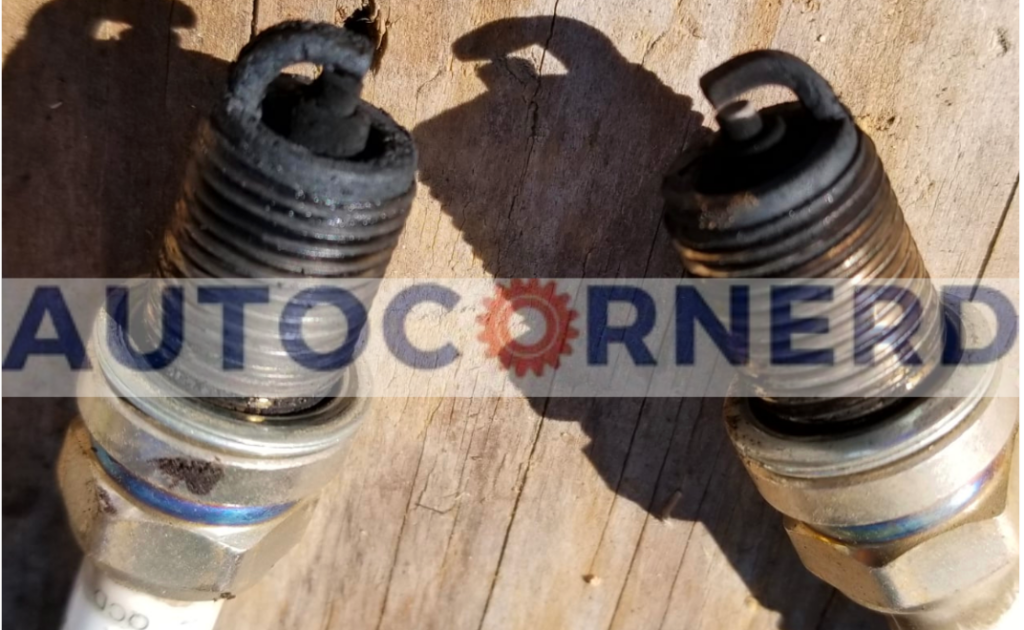
The car engine getting too hot can make the head gasket blow out. When the head gasket blows out, the coolant and oil of the engine can get mixed up. This mixed up stuff can go into the engine cylinder.
If this happens, the spark plugs can get dirty. Dirty spark plugs can’t make the spark that is needed for burning fuel. So the car may refuse to start if the spark plugs are dirty.
If your car has this problem, you need to replace the dirty spark plugs fast.
But don’t use cheap aftermarket parts. They can easily break and cause starting problems. The best thing is to get spark plugs suggested by the company who made your car.
How to check?
Use a socket to remove the plugs. Crank the engine. See if water or oil squirts from the plug hole.
7. Failure Of Transmission
The car’s transmission relies on transmission fluid to lubricate and cool it down. If the car gets too hot, the transmission fluid gets hot too.
The radiator has a part called a transmission cooler. It helps keep the transmission fluid at the right temperature. The fluid transfers heat to the coolant. But if the car overheats, the transmission cooler doesn’t work properly.
When the transmission fluid gets over 240 degrees Fahrenheit, varnish starts to form. The varnish blocks the fluid from flowing smoothly. This makes the transmission even hotter. As a result, seals get hard and plates start slipping. Pretty soon seals and clutches burn out.
Too much heat also causes carbon gunk to build up. This clogs the transmission’s inside parts. Then the transmission fails.
So overheating is bad news for automatic transmissions. Keeping things cool avoids big repair bills. Check those fluids and watch your temperature gauge. An ounce of prevention is worth a pound of cure.
8. Warped/Melted Timing Belt
The timing belt or chain in the engine makes the different crankshaft and camshaft work together. The belt or chain makes sure the valves open and close at the right time. This stops damage between the pistons and valves.
The timing belt is made of rubber. It sends the spinning movement of the crankshaft to the camshaft(s).
If the engine overheats, it can hurt the timing belt material. It can warp or even melt the belt completely. If this happens, the belt may jump a tooth on the camshaft. This causes bad valve timing. So your engine may stall, idle rough or not turn over.
Taking off the timing cover is an expensive job. But sometimes it’s needed to check the timing belt/chain. This should always be the last try, after simpler and cheaper ways.
9. Warped Cylinder Head
The metal parts in an overheated engine expand beyond their limits. If an engine gets too hot, the cylinder head can warp. That means it is no longer flat.
Even if the head gasket is okay, warping can make the engine lose compression.
If the engine head warps, the gasket might not seal the combustion chamber well.
So less air and fuel will get into the cylinder. Then the explosion in the cylinder is weaker. This can stop the engine from starting.
How to spot a warped engine head?
First, make sure the engine head is clean. No dirt. Put a straight edge across the cylinder head. Use a feeler gauge to look for gaps.
If there is a gap, it means the head or engine block is warped. You need to fix that.
What are the Causes of Overheated Engine?
Here are the following causes due to which your car may overheat:
1. Low Coolant Level
The coolant in your car’s engine absorbs heat from the engine parts and carries it away. This keeps the engine from overheating. But if the coolant level is low, it can’t do this job well. Then the engine can get too hot and its parts can be damaged.
There are some common reasons the coolant level might be low:
- Leaks: Coolant can leak from hoses, gaskets, or other parts it flows through. Check under your car for coolant puddles. Also smell for its sweet odor around the engine.
- Evaporation: Over time, coolant can evaporate from the engine, especially if the system isn’t sealed right or the coolant reservoir cap is missing.
- Lack of flushing: If the cooling system hasn’t been flushed in a long time, sediment and rust can build up. This takes up space meant for coolant, dropping the level.
A low coolant level stops it from absorbing and carrying away engine heat. This can lead to overheating and damage. Keep an eye on the level and fix any leaks to help avoid problems.
2. Stuck Thermostat
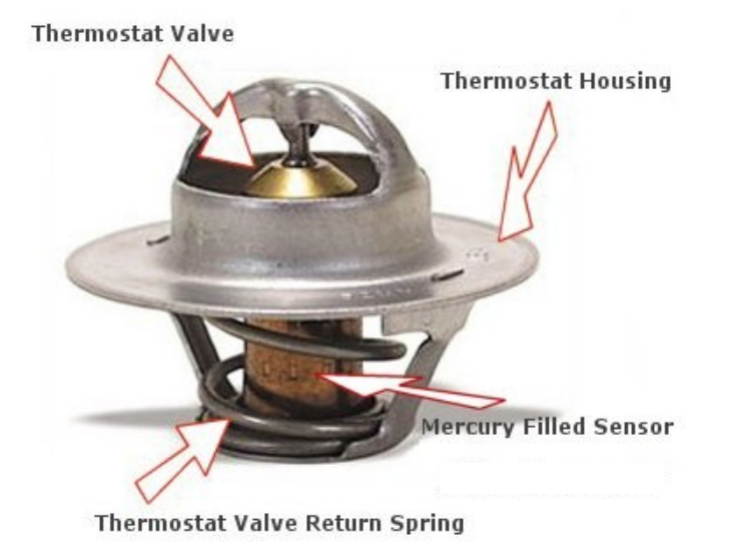
The thermostat sits between the engine and radiator, controlling coolant flow to regulate temperature. When the engine is cold, it stays shut, blocking coolant from reaching the radiator. As the engine warms, it opens to circulate the coolant and cool things down.
If stuck closed, no coolant hits the radiator. The engine heats up quick and the dashboard temperature gauge climbs.
To find the thermostat, follow the radiator’s upper hose. Its end connects to the thermostat. Put the hands on the upper radiator hose as hot coolant from engine flows through it. If the thermostat is stuck open or leaking, the radiator hose will quickly get hot.
3. Clogged Radiator
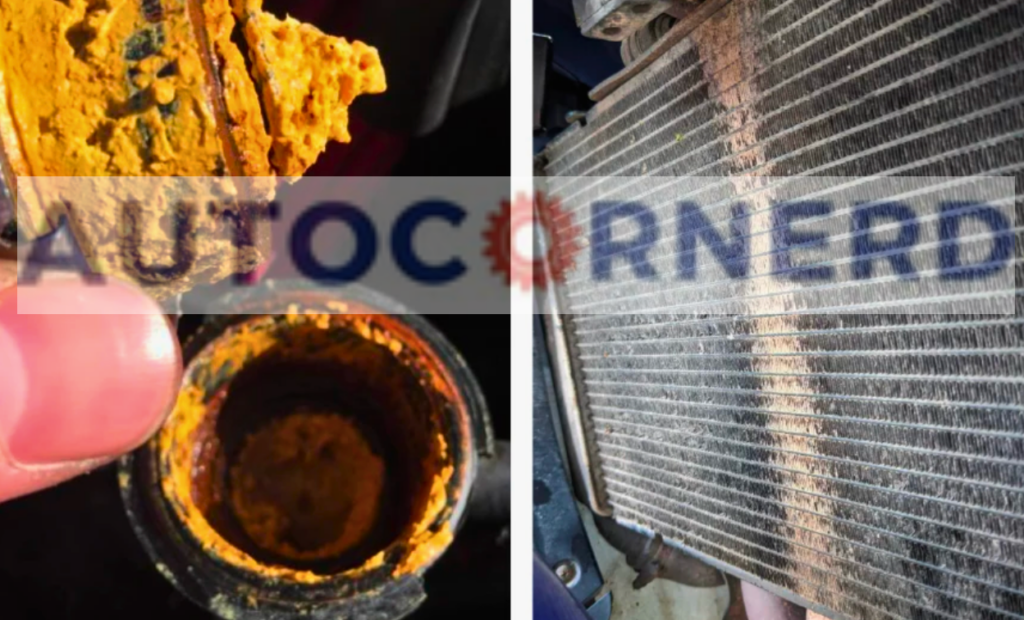
Your car’s radiator works by moving coolant through tiny tubes. As the coolant flows, it soaks up heat from your engine.
The hot coolant then goes back to the radiator. The radiator has fins that give it more space to let the heat go away faster. When the coolant goes past the fins, it releases the heat it soaked up. This lets it cool down.
Over time, dirt and stuff can get stuck in the radiator.
This blocks the coolant from flowing through. That makes the radiator get too hot. When it’s clogged like that, the radiator can’t cool the coolant well. So the engine gets hot.
How to inspect clogged radiator?
Use an infrared thermometer to look at the temperature in different spots of the radiator. If the temperature is not the same everywhere, it shows a clogged radiator.
Use a hose to flush out any dirt in the radiator. Make sure the coolant in the radiator gets changed regularly. Old liquid gets acidic and leaves buildup.
To flush the coolant:
- Open the radiator valve at the bottom to drain it.
- Close the valve and fill with pure water.
- Start the engine and drive for 20 minutes. Turn the heater to high.
- Drain the water from the cooling.
- Add the right liquid/antifreeze in a 50/50 mix.
4. Malfunctioning Radiator Fan
The radiator fan is important for your car’s engine. If the fan stops working, it can’t pull air through the radiator. This means the engine won’t get the cooling it needs. An overheated engine can cause problems.
The ECU controls the electrical radiator fan. If your fan isn’t working, check the fan’s wiring harness connector too.
Some First Hand Experiences Shared By Users In Different Communities
Our team conducted research across various online communities, forums, and subreddits to gather user comments and opinions on “car fails to crank after overheating”.
User 1 says:
My Outback overheated and wouldn’t start. Turns out it was the head gasket. Common issue in Subarus, but mine was out of warranty. Costly repair but once fixed, it ran smoothly.
User 2 says:
Experienced something similar with my Fiesta. Turned out to be a faulty engine temperature sensor giving wrong readings, leading to overheating. Sensor replacement fixed it.
User 3 says:
Had a similar problem with my Accord. Overheated and shut down. Mechanic found a cracked radiator hose. Replaced it and everything’s fine now. Always check your hoses!
